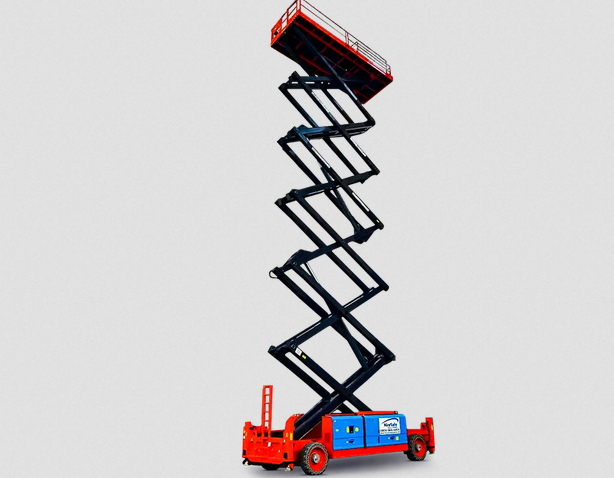In the realm of outdoor adventures, construction projects, and emergency services, extreme terrain vehicles (ETVs) play a crucial role. These specialized vehicles are designed to navigate challenging landscapes, making them invaluable in various applications. However, with numerous options available for hire, selecting the right ETV can be a daunting task. This guide aims to equip individuals and businesses with the knowledge needed to make informed decisions when hiring an ETV, ensuring optimal performance and safety for any project.
Understanding Extreme Terrain Vehicles
Extreme terrain vehicles encompass a broad category of vehicles designed for off-road use in rugged environments. They include all-terrain vehicles (ATVs), utility task vehicles (UTVs), track vehicles, and specialized rock crawlers. Each type of ETV is tailored for specific tasks and terrains, making it essential to choose the right vehicle for your needs.
Types of ETVs
- All-Terrain Vehicles (ATVs):
- Description: Compact, single or tandem rider vehicles known for their agility and versatility.
- Best For: Recreational use, trail riding, and utility tasks in varied terrains.
- Utility Task Vehicles (UTVs):
- Description: Larger vehicles with side-by-side seating and cargo capacity.
- Best For: Agricultural applications, forestry, and any task requiring transport of multiple passengers or equipment.
- Track Vehicles:
- Description: Vehicles equipped with tracks instead of wheels, providing enhanced stability and traction.
- Best For: Snowy, muddy, or soft ground conditions, typically used in winter sports and remote explorations.
- Rock Crawlers:
- Description: Specialized vehicles designed for navigating rocky terrains with high suspension and low gearing.
- Best For: Off-road enthusiasts participating in extreme rock climbing challenges.
Key Considerations When Hiring an ETV
When it comes to hiring an extreme terrain vehicle, several critical factors must be considered to ensure that the chosen vehicle meets specific operational needs.
1. Assess Your Terrain and Conditions
Understanding the terrain where the ETV will be used is crucial. Different vehicles excel in various environments, and selecting the right one can make all the difference.
- Flat vs. Hilly Terrain: Steep inclines may require vehicles with greater power and traction.
- Wet or Muddy Conditions: Opt for vehicles with enhanced grip and stability to prevent slippage.
- Snow or Ice: Track vehicles are often the best choice for snowy conditions due to their superior traction.
2. Determine Your Load Requirements
The intended use of the vehicle will dictate its required payload capacity. Assess the weight of the passengers and equipment to ensure that the chosen ETV hire can safely accommodate the load.
- Payload Capacity: Each vehicle has a specified maximum weight limit; exceeding this can lead to performance issues and safety hazards.
- Storage Space: Consider the need for additional storage for tools or supplies, especially in utility tasks.
3. Evaluate Engine Power and Fuel Efficiency
The engine's power and fuel efficiency are essential factors, especially for long-duration tasks. A powerful engine is necessary for navigating challenging terrains, while fuel efficiency can significantly impact operational costs.
- Horsepower and Torque: Look for vehicles with sufficient horsepower for the intended tasks and terrains.
- Fuel Type: Consider whether to opt for diesel or gasoline engines, as this can affect both performance and operational costs.
4. Consider Safety Features
Safety should always be a priority when selecting an ETV. Examine the safety features available on different models to ensure that they meet industry standards and provide adequate protection for operators and passengers.
- Roll Cages and Seatbelts: Essential for protecting occupants in case of rollovers or accidents.
- Stability Control Systems: Some vehicles come equipped with features that enhance stability, particularly on uneven surfaces.
5. Review Maintenance and Support Options
Before hiring an ETV, it is essential to consider the maintenance and support options offered by the rental company.
- Pre-Rental Inspections: Ensure that the company conducts thorough inspections of the vehicles before renting them out.
- Maintenance History: Inquire about the maintenance records of the vehicle to confirm its reliability and safety.
Making the Right Choice
Once you have assessed your needs and reviewed the available options, making the right choice becomes simpler. Here are steps to help guide your decision-making process:
1. Research Rental Companies
Look for reputable rental companies that specialize in extreme terrain vehicles. Read customer reviews and testimonials to gauge their reliability and service quality.
2. Seek Expert Advice
Don’t hesitate to ask for recommendations from professionals or experienced users in the field. Their insights can provide valuable information on which vehicles perform best under specific conditions.
3. Test Drive the Vehicle
If possible, test drive the ETV before finalizing the rental. This firsthand experience can help assess comfort, handling, and overall suitability for your needs.
4. Understand Rental Agreements
Carefully read the rental agreement to understand the terms, including insurance, liability, and maintenance responsibilities. Ensure that you are aware of any additional fees or conditions that may apply.
Conclusion
In conclusion, choosing the right extreme terrain vehicle for hire requires careful consideration of various factors, including terrain type, load capacity, engine power, safety features, and rental company reputation. By understanding your specific needs and evaluating the available options, you can make an informed decision that enhances your operational efficiency and safety. For those seeking reliable and high-quality extreme terrain vehicles, hiresafesolutions offers a comprehensive selection tailored to meet diverse needs. With the right ETV, you can confidently tackle any rugged challenge, ensuring successful outcomes in your adventures or projects.





Comments